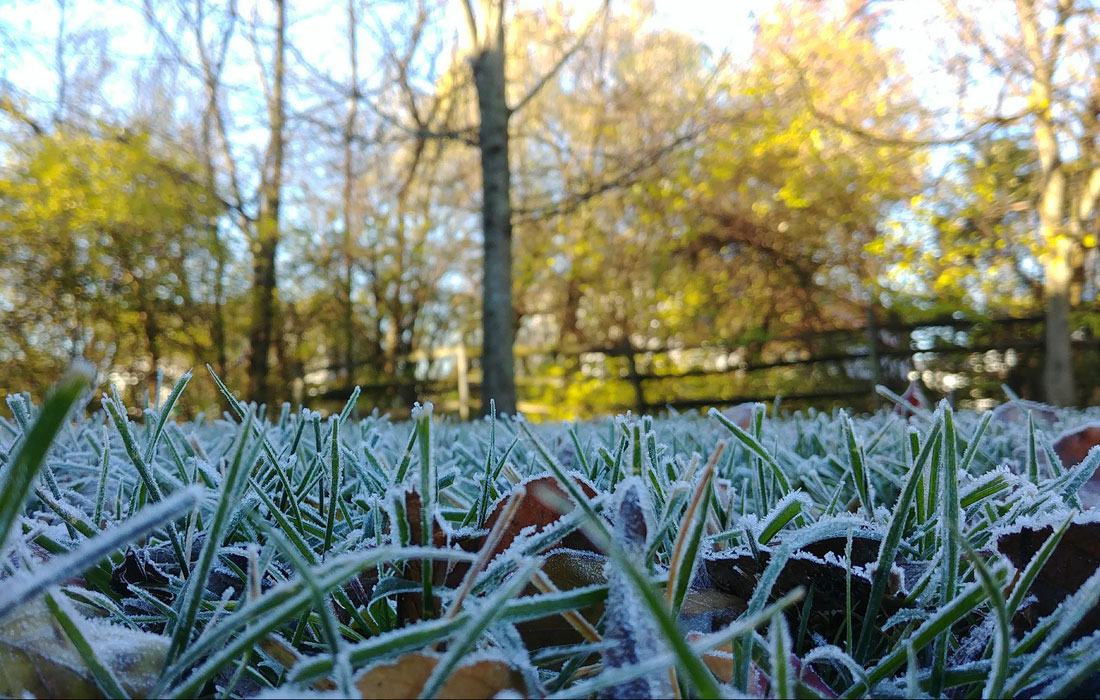What to do this fall to help your yard through the winter
By CLDOffice In Landscaping adviceFall is the time to examine your lawn, trees and shrubs, and take some steps to help prepare them for the winter ahead. It’s a good time to do a final trim of the lawn, close up perennial gardens, protect delicate plants such as roses, and prune woody plants to maintain desired size and plant health. If the fall landscape work slips by your time, there is no need to worry as much of this work can be done late winter or early spring as well as late fall. But different plants have different needs, and it’s important to know the differences, so your plants stay strong through the winter.
Lawns
For established lawns, the condition of the lawn directs the care for the fall. A soil test is recommended to determine whether you need a lime application, often the case for lawns exposed to acidic trees such as pine and oak. It is fine to leave mulched tree leaves on your lawn; however, check the soil acidity with a soil test before doing so. A heavy layer of leaves should not be left on the lawn as it can cause winter kill. A lawn that has very compacted soil should be aerated, preferably with a plug aeration machine. If your lawn is thin, top dress and over seed the lawn. Over seeding should be done earlier in the fall to allow time for the seed to germinate. In all cases, fertilize the lawn while the grass is still green and growing to be able to absorb the fertilizer.
Perennials
Some perennials provide winter interest, such as some tall grasses and rudbeckia. Perennials that flatten out with frost, such as hosta, lily, and paeonia, are easier to cut back in the fall while they are still standing versus after they have been hit with frost or snow. It is also a good time to divide perennials as needed.
Roses
It is preferable in colder climates to prune roses in the spring to avoid winter die back. Slight shaping may be done in the fall, with intention of final shaping in the spring when any winter die back will be cut off with more intentional shaping. It is best to place plenty of soil and mulch around the base of roses to protect the root systems in colder zones.
Rhododendron
Both large and small leaf rhododendron, which bloom in late spring, should be pruned right after blooming. Rhododendron make up new blossoms for the following year after they complete their bloom cycle. If rhododendron are pruned in the fall, blossoms could be cut off for the following season; thus, fall pruning is not recommended for this reason. This also applies to flowering shrubs such as forsythia.
Large Leaf Hydrangeas ( Macrophylla)
In northern climates, the large leaf hydrangea such as the “Endless Summer” can be neatened up for the winter by removing the dead blossoms which are not particularly attractive as winter interest. In late spring, after threat of frost, prune lightly overall, pruning down the stem to a large opposite pair of buds. Any dead stems can be removed at this time. This approach will maintain a nicely shaped plant with flowers of average size. The more pruning and thinning that is done, the larger the blossoms will be. Of course, the success of macrophylla blooming in northern areas is affected how many of the buds have been damaged by cold and frost. For instance, these plants are more reliable bloomers in Massachusetts than in Maine in many cases.
Small Leaf Hydrangeas ( Paniculata)
Paniculata hydrangeas such as Limelight and Quick Fire can be left unpruned or shaped. Younger plants often need shaping and may need more vigorous hard pruning to establish a desirable mature shape. The amount of pruning may also be a factor of where the plant is placed. If near windows or tight areas, hard pruning may be necessary to maintain size. Otherwise, light pruning removing the dead blossoms down to a strong set of buds which will generate new spring growth. There may be some winter browning of the tips if pruned later in the fall, but that will not harm the plant if this is a more desirable time to prune. The other suggested pruning time is late winter or early spring. Removing one half to one third of the previous year’s new growth will nicely shape the plant and produce medium sized blossoms. More vigorous pruning past the previous year’s new growth will produce larger size blossoms.
Use the right tools for the job
The right size and type of pruner is critical for property pruning. Hand pruners are good for the thinner new wood from the current season. Small to medium size loppers are appropriate for larger branches if pruning to maintain size of the plant. A pruning saw might be necessary for older plants that may need older wood removed. In all cases, the pruners should be sharp and they should be clean to avoid spreading disease.


